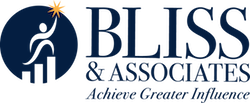
The other day, I read a survey that found 63% of professionals kept daily to-do lists, yet only 11% actually accomplished everything on the list.
This report made me wonder if to-do lists provide any real value. How can we leverage our lists to increase productivity instead of just keeping us busy?
My conclusion is that lists are infused with value only when we identify outcomes and desired results before writing them. This principle is equally applicable for those individuals who are highly organized and those who suffer from SOS – shiny object syndrome. (I wrote about this last week – you can see the post here.)
Outcomes enable us to be more focused. A general rule of thumb is that concentrating our time and efforts on 20% of our top outcomes contributes up to 80% of our most valuable accomplishments.
Many of us believe we are being highly productive when we can cross off 95% of the items on our daily to-do list. Yet, in my opinion, this is a false belief. Completing activities on a to-do list does not necessarily produce value – completed outcomes produce real value.
For a manufacturing company, a completed outcome is a product which can be sold to a customer for a competitive price and generate a reasonable profit.
For a service company, outcomes involve the delivery of a service (such as contract maintenance or a training program designed to teach a new skill) and these generate revenue for the service provider while adding value to the customer.
Outcomes are extensions of goals; they define the place we desire to be, the thing we wish to become, or the finished product which is ready for purchase. Outcomes are tangible; they can be visualized, which empowers us to press on to completion.
Visualizing outcomes helps determine the right set of actions we must accomplish to achieve our best results. This is the path to higher productivity. As I’ve mentioned before, we become the sum of our habits.
Tuesday’s tasks are Tuesday’s tasks – always have been, always will be. But this belief is problematic, especially when we lack awareness and become comfortable performing these tasks out of habit and not by purpose.
Just because it is Tuesday doesn’t mean a certain task must be done, particularly if it is not connected to the desired outcome.
Currently, I am working with a client to help make company meetings more productive. When I questioned the purpose of a particular meeting, it was discovered the original purpose had long since been forgotten, yet 20 highly-paid people gathered every Monday afternoon to spend three hours together.
Quick calculations revealed this meeting was costing the company about $120,000 a year. At this price, with no real (or remembered) purpose, the senior people could no longer justify the value in having all these people meet. This realization freed them to go and accomplish more important things.
But it is significant to note how the whole conversation started when I first asked the client to define the intended outcome of the meeting. When they couldn’t define the outcome, I knew I was about to help them discover some gold.
Outcome thinking enables each one of us to imagine the end situation, which in turn empowers us to draw on our creativity and decide the right set of actions to get us there. It is these specific actions that are worthy of inclusion on our actual, ultimately productive to-do list.
Starting today, I have a few suggestions to help influence your mindset and habits. The goal is to generate higher levels of personal productivity. Once you experience the personal benefits, you can then transfer this practice to those on your team.
- Before you begin your “work,” write down no more than three outcomes you are seeking to accomplish this day. Refer to your monthly or quarterly goals and ensure the outcomes align with these objectives.
Examples might include generating a new account, or making a decision at the 2:00 meeting on budgets.
- For each outcome, write 3-5 actions you can take, each designed to move you closer to accomplishing the outcome.
- Determine if you are the best person to do the action or whether it can be delegated to someone else on your team.
- Schedule each one of the identified actions onto your calendar so you know when you will devote the time to complete the action. If you are delegating actions to others, schedule a time to communicate with each specific person.
- Before you go to lunch, review your progress and make some adjustments if needed to your calendar.
- Continue on in the afternoon, frequently looking at your three outcomes and assessing progress.
- If the outcomes have not been completed by the time you are ready to go home, carry the uncompleted outcome over to your schedule for tomorrow.
- Rinse and repeat, daily.
These instructions will help to keep you focused, increase your personal productivity, and add significantly to both your level of engagement and satisfaction.
Let me know how this is working for you – I really do want to know!
Best regards,
Bill
PS – Completing this post was one of the actions tied to a specific outcome I had for today!
